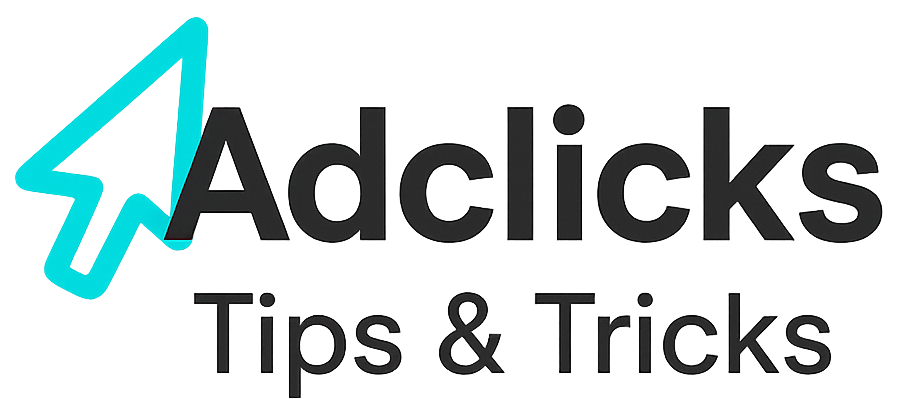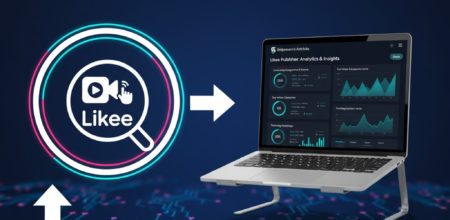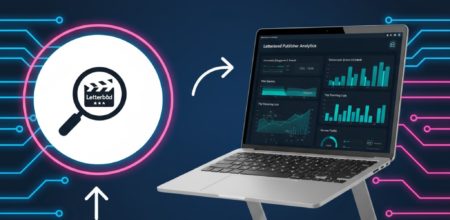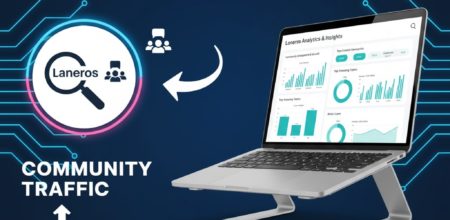Why Facebook Still Matters
It’s easy to assume Facebook’s influence has peaked, but that couldn’t be further from the truth. With more than three billion active users, it remains the largest connected network on the planet — a digital city where audiences from every generation spend hours each week reading, watching, and reacting. For publishers, this vast ecosystem isn’t just a broadcast outlet; it’s a living funnel of potential visitors who already engage with content daily.
The opportunity isn’t simply to post a link and hope for clicks. Success on Facebook means learning its culture, using its tools with intent, and leading readers toward content that genuinely benefits them. When executed well, these visitors transition naturally from scrolling through posts to exploring full pages on your site — where Adclicks placements can transform engagement into revenue without damaging trust.
To get there, you need to understand what motivates Facebook’s users, how its environment shapes content, and what separates high-performing publisher strategies from the noise of generic posting.
Understanding Facebook’s Audience, Culture, and Traffic
Facebook’s audience is enormous yet diverse. As of 2025, it’s the only platform where all age brackets — from late teens to retirees — remain consistently active. Most users log in at least once per day, and average time spent exceeds nineteen hours per month. They come for connection, discussion, and curiosity. Publishers who meet those expectations with value-driven material tend to build loyalty faster than those who focus on quantity alone.
Geographically, India and the United States lead total user counts, followed closely by Indonesia, Brazil, and Mexico. Each region brings unique interests and behaviours: global news in the US and UK, entertainment and mobile-first content in Southeast Asia, and small-business stories across Latin America. Recognizing this spread helps you adjust tone and posting times for the best traction.
Because Facebook rewards interaction more than impressions, content that sparks comments, questions, or emotion travels further. This is where Adclicks becomes a quiet advantage. By monetizing your on-site follow-through — the destination users reach after those conversations — you can prioritize community engagement first and let the earnings flow from genuine activity rather than forced clicks.
Publisher Fit: Who Should Use Facebook
Almost every website can benefit from Facebook visibility, but some niches excel. Lifestyle, entertainment, how-to education, and local interest pages all align with the platform’s conversational flow. News and commentary also perform strongly, provided they maintain credibility and respond quickly to discussion.
The platform’s design favors shareable visuals and short-form storytelling. A craft site posting simple step-by-step tutorials may earn organic reach far beyond paid ads. Likewise, a technology blog sharing quick explainers can capture attention if it translates complexity into clarity. The most successful publishers combine familiarity with authority — they sound approachable yet reliable.
For those using Adclicks, this structure is ideal. Facebook users click because they’re curious, not because they’re hunting for ads. When your landing pages extend that curiosity and contain context-sensitive Adclicks banners or links, revenue grows organically. You’re not selling; you’re completing a thought your post began.
Creating a Facebook Page for Your Website
A Facebook Page acts as your brand’s public face. It should reflect your site’s identity while fitting comfortably within Facebook’s ecosystem. Start by choosing a descriptive Page name — one that matches your domain and signals what visitors will gain. Fill out the About section fully; many users check it before clicking outbound links. Add a recognisable profile image (often your logo) and a high-quality cover image that visually conveys what your content delivers.
Posting rhythm matters more than frequency. Consistency builds the signal Facebook’s algorithm uses to judge relevance. Plan a schedule of diverse posts: teaser paragraphs linking to articles, short videos summarising topics, question-based prompts, and live sessions. Alternate between promotional and conversational tones. Avoid “link dumps” — the algorithm suppresses posts that appear one-dimensional.
Each post should direct attention subtly toward your website. The goal is to intrigue users enough to click through voluntarily. Once there, well-placed Adclicks units can monetise the engagement while your content provides value. Think of your Page as the storefront and Adclicks as the checkout system running behind polished service.
Driving Engagement Through Content and Conversation
Facebook thrives on dialogue. Posts that invite users to comment or tag friends outperform static updates. Ask open-ended questions tied to your content: “Which design tool saves you the most time?” “What’s one recipe you never change?” When readers respond, reply quickly — every comment thread increases reach.
Use media variety to sustain attention. Short native videos perform strongly, particularly those under sixty seconds with captions for silent viewing. Memorable imagery — infographics, quote cards, or before-and-after visuals — helps posts travel beyond your existing followers. If you manage multiple topics, create themed days or weekly segments to build habit.
Whenever a conversation gains traction, ensure your website offers a natural continuation. Embed Adclicks placements within articles users arrive at, balancing monetization with relevance. Done properly, the visitor never feels “sold to”; they simply experience continuity from your Page’s energy to your site’s depth. Over time this alignment builds credibility and revenue simultaneously.
How to Measure and Adjust Early Results
Before scaling, watch your first thirty days carefully. Monitor metrics in Facebook Insights: reach, engagement rate, click-throughs, and audience demographics. These reveal which post types and times resonate. If link posts underperform but short videos soar, adjust accordingly. Experiment with headline styles and visuals until patterns appear.
It’s tempting to chase viral moments, but steady growth is more sustainable. A community built through consistent interaction produces long-term traffic you can plan around. As you refine content, cross-check analytics on your website too — time-on-page and bounce rate show how Facebook users behave once they arrive.
When you can trace engagement through to meaningful actions — reading multiple pages, subscribing, or clicking Adclicks offers — you’ve found the rhythm worth scaling. The secret is gradual optimisation, not sudden reinvention.
Creating a Facebook Group for Deeper Engagement
If a Page is your brand’s storefront, a Group is the café behind it — a place where visitors linger, talk, and connect. Facebook Groups remain one of the few areas where organic reach still thrives. The reason is simple: Facebook prioritises personal interaction. A well-run Group attracts members who discuss topics daily, tagging friends and linking to useful content.
To start, create a Group that fits naturally beside your Page’s theme. Give it a name that signals value rather than brand promotion — something like “Freelance Design Tips UK” or “Everyday Smart Cooking”. Add clear rules that discourage spam and encourage discussion. Pin a welcome post introducing your mission and linking discreetly to your main site. Post discussion starters rather than announcements: “What tools do you rely on most?” or “Share your latest project.” When people feel heard, they participate.
As your Group gains activity, direct interested members toward resources that expand the conversation. This is where Adclicks becomes strategically valuable. Articles on your site containing relevant Adclicks placements can serve as extended answers, tutorials, or tool lists that satisfy curiosity while generating revenue. The more helpful your shared links feel, the more trust converts into measurable engagement.
Nurturing Community Growth
Group growth relies on balance — enough moderation to keep quality high but enough freedom to let members speak naturally. Assign moderators early if possible. Respond to questions, like comments, and spotlight insightful member posts. When people see that their voice matters, they contribute regularly, sustaining the algorithmic visibility that keeps your Group active in user feeds.
Regular themes help consistency. For example, a tech publisher might host “Fix-It Fridays” for troubleshooting, while a lifestyle site might run “Weekend Challenges.” Over time, members come to expect these anchors and invite friends who share interests. Growth by referral beats paid promotion every time because it compounds organically.
Every few weeks, review analytics in the Group Insights dashboard — engagement levels, popular posts, membership trends. When you see spikes, trace them back to content types. Re-share or update those formats on your Page and site. Link to articles enriched with Adclicks banners or contextual placements that extend exactly what members were discussing. The key is alignment: social talk flows into deeper reading without friction.
Participating in Other Pages and Groups
You don’t have to own every conversation to benefit from Facebook. Often, the most effective visibility comes from participating authentically in existing communities. Join Groups within your niche, follow Pages run by thought leaders, and engage as a knowledgeable contributor rather than a competitor.
When joining a new Group, read the rules carefully. Many allow sharing links only if they answer a direct question. Use that to your advantage: respond helpfully first, then reference your own article or resource for additional clarity. The intention must always be to educate, not to sell. Members — and algorithms — can sense the difference instantly.
As these interactions accumulate, your Page gains reputation and inbound traffic grows. People click through profiles to learn more about consistent contributors. That’s your silent pipeline. Make sure your Page is optimised and that your website landing pages host Adclicks placements naturally, so the value loop completes when those visitors arrive. It’s relationship marketing disguised as everyday discussion.
Landing Page Alignment and Conversion
Every click you earn from Facebook represents curiosity — don’t waste it. The landing page should mirror the promise made in the post or comment that led the user there. If your Group conversation was about new design tools, the headline should mention those tools directly. Immediate recognition lowers bounce rate and builds credibility.
Keep formatting clean: short paragraphs, subheadings, and mobile-friendly layouts. Most Facebook visitors browse on mobile devices, so ensure images scale properly and load fast. Include at least one relevant call-to-action — newsletter signup, downloadable resource, or related article link — before the reader scrolls too far.
Integrate Adclicks placements logically: mid-article banners, sidebar recommendations, or context-based links embedded in paragraphs discussing related tools or services. Done this way, Adclicks complements your storytelling rather than interrupting it. The experience remains seamless, and monetisation becomes a by-product of user satisfaction instead of distraction.
Managing Risk and Algorithm Changes
Facebook’s algorithms evolve continuously, shifting how posts and Groups are prioritised. The 2025 updates put heavier weight on authentic interactions, dwell time, and conversation depth. Low-effort posts — especially those perceived as clickbait — lose traction fast.
To mitigate risk, diversify both your content and posting approach. Mix visuals, text, and live formats; alternate between Page and Group engagement; and keep testing new formats. Avoid over-reliance on boosted posts or ad spending for visibility. Paid promotion can help launch content but shouldn’t be your primary traffic source.
Above all, never violate community guidelines or spam policies. Repeated outbound links without context can reduce reach or trigger penalties. It’s better to create one thoughtful post that draws users into a discussion leading to your site — where Adclicks can monetise naturally — than to scatter ten empty links that Facebook buries instantly.
Building Authority and Trust Over Time
Authority on Facebook isn’t declared; it’s earned through persistence. When followers repeatedly see your Page or Group offering real insight, their trust compounds. Reply to comments, post helpful updates, and occasionally share behind-the-scenes moments or case studies. Transparency humanises your brand, making your audience more receptive to your website content.
Collaborations accelerate growth. Partner with complementary Pages or Groups to co-host live discussions or content swaps. Cross-posting exposes each community to fresh voices while reinforcing your reliability. Keep partnerships clear of heavy promotion — the best alliances centre on shared expertise.
Over months, this reliability turns into sustained traffic. As users click to read full content or explore linked resources, Adclicks placements on your pages quietly convert attention into revenue. By treating monetisation as the outcome of trust, not its purpose, you future-proof your presence against algorithm volatility.
Expanding Beyond Facebook
While Facebook can serve as a dominant traffic source, its greatest strength lies in what it builds — awareness and connection. Once you capture loyal readers, direct them to alternative touchpoints: newsletters, communities on other platforms, or your own site’s forums.
Add social follow buttons and content sign-ups on your landing pages so Facebook users can remain connected even if platform visibility dips. Encourage them to bookmark your site or subscribe via email for updates. Maintaining multiple communication channels shields you from sudden platform changes.
Adclicks plays an ongoing role here, too. By keeping placements on all your owned assets — not just Facebook-driven landing pages — you ensure that returning visitors continue to monetise naturally. Traffic may diversify, but your earning structure stays consistent.
10-Step Action Plan for Facebook Publishers
- Create a compelling Page that clearly presents your brand and purpose.
- Develop a Group tied to your niche and foster daily interaction.
- Post consistently using varied formats — text, video, polls, and visuals.
- Engage genuinely in other Groups and Pages to expand organic reach.
- Share helpful links that extend conversations rather than interrupt them.
- Design responsive landing pages matching post intent and topic.
- Integrate Adclicks placements contextually within valuable content.
- Track analytics in both Facebook Insights and your site metrics.
- Adapt to algorithm shifts by prioritising engagement and authenticity.
- Grow beyond Facebook by funnelling users into your broader ecosystem.
Facebook remains one of the most adaptable ecosystems for publishers. Its vast audience, established community features, and deep integration tools make it a foundation for consistent traffic if approached strategically. Success depends less on gaming algorithms and more on nurturing human connection — through Pages, Groups, and credible discussion.
When each click leads from a meaningful exchange to an equally valuable article, and that article monetises transparently through Adclicks, you create a cycle where everyone benefits: users get insight, you gain engagement, and the platform rewards authentic contribution.
Used with patience and purpose, Facebook is not just a social network — it’s a long-term publishing partner hiding in plain sight.
Relevant Links
- Support: https://support.snipesearch.co.uk/
- FAQ: https://adclick.snipesearch.co.uk/index.php?page=index/faq
- Contact Form: https://adclick.snipesearch.co.uk/index.php?page=user/support
Stay Connected
- Snipesocial: https://www.snipesocial.co.uk/pages/snipesearch
- Twitter: https://twitter.com/snipesearch_uk
- Facebook: https://facebook.com/snipesearch
- LinkedIn: https://linkedin.com/company/snipesearch/
- VK: https://vk.com/snipesearch_uk
- Focus: https://focus.xyz/snipesearch
- YouTube: https://youtube.com/@snipesearch
- diaspora: https://diaspora.snipesearch.net/people/7431fcf0806c013e936e00163c6e7bdf
Analytic Tools
- Rommie Visitor Analytics: https://rommie.net/
- StatCounter: https://statcounter.com/




